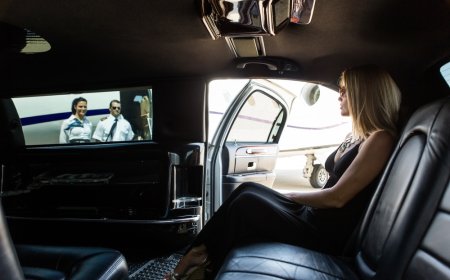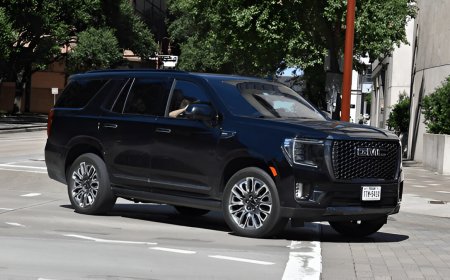How to Tour Sun Studio Memphis in 60 Minutes
How to Tour Sun Studio Memphis in 60 Minutes Sun Studio in Memphis, Tennessee, is more than just a recording studio—it’s the birthplace of rock and roll, the cradle of American music history, and a pilgrimage site for music lovers around the world. Founded by Sam Phillips in 1950, this unassuming brick building at 706 Union Avenue became the launching pad for legends like Elvis Presley, Johnny Cas
How to Tour Sun Studio Memphis in 60 Minutes
Sun Studio in Memphis, Tennessee, is more than just a recording studio—it’s the birthplace of rock and roll, the cradle of American music history, and a pilgrimage site for music lovers around the world. Founded by Sam Phillips in 1950, this unassuming brick building at 706 Union Avenue became the launching pad for legends like Elvis Presley, Johnny Cash, Jerry Lee Lewis, Carl Perkins, and B.B. King. Today, Sun Studio operates as a museum and working recording space, offering guided tours that transport visitors back to the golden age of rhythm and blues, country, and early rock. But with limited time and high demand, many visitors wonder: Can you truly experience the soul of Sun Studio in just 60 minutes? The answer is yes—and this guide shows you exactly how.
This 60-minute tour isn’t just about checking off a landmark. It’s about immersion. It’s about standing where Elvis laid down “That’s All Right,” hearing the same echo chamber that shaped the sound of a generation, and understanding the cultural revolution that began in a tiny room with a single microphone. Whether you’re a casual fan, a serious music historian, or a first-time visitor to Memphis, mastering the art of a 60-minute Sun Studio tour transforms a quick stop into a profound, memorable encounter with musical heritage.
In this comprehensive guide, we’ll walk you through every step of optimizing your visit—how to plan, what to prioritize, how to engage with the space, and how to leave with more than just photos. You’ll learn insider tips, avoid common pitfalls, and uncover the hidden layers of Sun Studio that most tourists miss. By the end of this guide, you won’t just know how to tour Sun Studio in 60 minutes—you’ll know how to feel it.
Step-by-Step Guide
Step 1: Plan Your Visit in Advance
Before you even step foot in Memphis, your 60-minute Sun Studio tour begins with planning. Sun Studio operates on a strict tour schedule, with sessions starting every 30 minutes from 9:00 a.m. to 5:30 p.m. daily. To maximize your time, book your ticket online at least 48 hours in advance through the official Sun Studio website. Walk-up tickets are available but often sell out, especially during peak seasons like spring and summer.
When selecting your tour time, aim for a slot between 9:00 a.m. and 11:00 a.m. Morning tours are less crowded, the lighting in the studio is ideal for photography, and the air is cooler—important in Memphis’s humid climate. Avoid midday slots if possible; the heat and tourist volume peak between 12:00 p.m. and 3:00 p.m., making it harder to absorb the atmosphere.
Also, check the weather forecast. Memphis summers are hot and humid, and while the studio is air-conditioned, you’ll be walking between indoor exhibits and outdoor areas. Wear breathable clothing, bring water, and consider a hat. Comfortable shoes are essential—you’ll be standing and walking for the full hour.
Step 2: Arrive 15 Minutes Early
Arriving early isn’t just recommended—it’s critical. The studio entrance is small, and the waiting area fills quickly. If you arrive at 8:45 a.m. for a 9:00 a.m. tour, you’ll have time to:
- Use the restroom (there are no facilities inside the studio)
- Review your ticket and ID
- Take in the exterior of the building—the iconic red brick façade, the historic sign, and the outdoor mural depicting the Sun Studio artists
- Photograph the “Walk of Fame” pavement stones that honor inductees like Elvis and Johnny Cash
Arriving early also gives you a psychological edge. You’ll feel calm and prepared, not rushed. This mental state allows you to absorb the history more deeply once the tour begins.
Step 3: Enter the Studio and Listen to the Opening Narration
At exactly 9:00 a.m., your guide will lead you into the studio. Do not rush in. Pause for a moment as the door closes behind you. The air changes. The walls, still lined with the original acoustic tiles from the 1950s, seem to hum with residual energy. The guide will begin with a brief, powerful narration—often including audio clips of Sam Phillips himself. Listen closely. This is not background noise; it’s the foundation of your entire experience.
The narration typically covers:
- How Sam Phillips sought to record “the sound of the common man”
- His philosophy of capturing raw emotion over technical perfection
- The racial integration of music at a time when segregation was the norm
These points are essential context. Without them, you’re just looking at a room. With them, you’re standing in the epicenter of a cultural revolution.
Step 4: Focus on the Four Key Zones
Within the 60-minute window, your guide will take you through several areas, but only four are truly essential to your understanding. Prioritize these zones:
Zone 1: The Original Recording Room
This is the heart of Sun Studio. The walls are covered in the same cork and acoustic tiles installed in 1950. The same piano Elvis played still sits in the corner. The same microphone—often the iconic RCA 44BX—hangs above the center of the room. Your guide will play a recording of Elvis’s first session, “That’s All Right,” and you’ll hear the raw, unpolished energy that changed music forever.
Stand in the exact spot where Elvis stood. Look at the ceiling. Notice how the sound bounces off the angled tiles. This is the secret to Sun Studio’s signature echo. No digital reverb was used—just physics and genius.
Zone 2: The Control Room
Behind a glass window lies the control room, where Sam Phillips and engineer Bill Porter manipulated the sound using analog tape machines, tube preamps, and a single mixing board. You’ll see the original 1950s equipment, including the Ampex tape recorder that captured the first Elvis recordings.
Ask your guide to demonstrate how they achieved the “slapback echo”—a signature Sun Studio effect created by feeding the tape signal into a second tape machine with a slight delay. This technique became a staple in rockabilly and country music. Understanding this technical detail transforms the experience from passive observation to active appreciation.
Zone 3: The Wall of Legends
This is a curated display of original photographs, handwritten lyrics, and personal artifacts. Pay attention to the handwritten notes from Johnny Cash on his first contract, the gold record for Carl Perkins’ “Blue Suede Shoes,” and the leather jacket Elvis wore during his Sun sessions.
Don’t just glance—read the captions. Many of these artifacts tell stories you won’t hear in the guided narration. For example, Sam Phillips reportedly paid Elvis $25 for his first recording—money he later called “the best investment I ever made.”
Zone 4: The “Walk of Fame” and Exit Exhibit
As you leave the main studio, you’ll pass through a small exhibit featuring modern artists who’ve recorded at Sun Studio since its revival in the 1980s. This includes acts like The White Stripes, Jack White, and even contemporary country stars. This section bridges the past with the present, showing that Sun Studio’s legacy isn’t frozen in time—it’s alive.
Take a moment to sign the guestbook. It’s not just a formality—it’s a tradition. Thousands of visitors have written messages here, from “I came to see where Elvis began” to “My son was born today and I wanted him to know this place.”
Step 5: Ask the Right Questions
Guides at Sun Studio are knowledgeable, passionate, and often former musicians or historians. Don’t be shy. Ask questions that deepen your understanding:
- “What was the first song recorded here that wasn’t by Elvis?”
- “How did Sam Phillips convince Black artists to record here during segregation?”
- “Is the piano in the studio the original one Elvis played?”
- “What’s the most unusual thing ever recorded here?”
One popular question that yields surprising answers: “Did any artist ever refuse to record here because the room was too small?” The answer is yes—some Nashville producers initially dismissed Sun Studio as “too raw,” but that rawness became its greatest strength.
Step 6: Use the Final 10 Minutes Wisely
Your tour ends at 10:00 a.m. sharp. Use the last 10 minutes to:
- Visit the gift shop (open to non-tour guests too) and pick up a vinyl record of Sun Studio classics
- Take one final photo in front of the studio sign
- Scan the QR code on the exit sign to access a free digital audio tour of Sun Studio’s history on your phone
- Locate the nearest coffee shop or diner—many guides recommend The Peabody’s café or Gus’s World Famous Fried Chicken, just a 5-minute drive away
Do not linger in the gift shop beyond 10:10 a.m. The next tour group is already waiting. Respect the schedule—it’s part of preserving the experience for others.
Best Practices
Practice 1: Silence Your Phone and Avoid Flash Photography
Sun Studio is a sacred space. The original equipment is fragile, and the acoustics are sensitive. Flash photography can damage historic artifacts, and phone notifications disrupt the immersive atmosphere. Set your phone to airplane mode or silent before entering. Use natural light for photos. The studio’s windows provide excellent lighting for candid shots.
Practice 2: Engage Emotionally, Not Just Visually
Many visitors treat Sun Studio like a museum exhibit. Don’t. This is not a static display—it’s a living echo chamber of human emotion. As you stand in the recording room, close your eyes for 10 seconds. Imagine the sweat on Elvis’s brow, the nervous energy of Johnny Cash, the laughter between takes. Let the history resonate in your chest, not just your eyes.
Practice 3: Avoid Over-Scheduling
It’s tempting to cram Sun Studio into a full-day Memphis itinerary that includes Graceland, Beale Street, and the National Civil Rights Museum. But rushing from one site to another dilutes the impact of each. If you’re planning to visit Graceland later in the day, allow at least 90 minutes between tours. Give yourself space to reflect. Sun Studio’s influence is best absorbed in quiet contemplation, not rushed transit.
Practice 4: Bring a Notebook or Voice Recorder
Guides share stories and anecdotes you won’t find in brochures. Jot down quotes, names, or phrases that stand out. For example, one guide once said: “Sam didn’t record stars—he recorded souls.” That line sticks with visitors for years. Capturing these moments turns a tour into a personal archive.
Practice 5: Respect the Space as a Working Studio
Many don’t realize Sun Studio is still an active recording facility. Bands from around the world come to record here because of its unique acoustics. You may hear faint music drifting from a nearby room. Do not interrupt. Do not ask to peek. This is not a theme park—it’s a working art studio. Respect the musicians who are still making history here.
Practice 6: Learn the Terminology
Before your tour, familiarize yourself with a few key terms:
- Rockabilly – A fusion of country and rhythm and blues, pioneered at Sun Studio
- Slapback echo – The distinctive reverb effect created by tape delay
- Sam Phillips – The visionary founder who believed in “the sound of the common man”
- Memphis Sound – The raw, emotional, rhythm-driven style that emerged here
Understanding these terms helps you follow the guide’s explanations and enhances your appreciation of what you’re seeing.
Tools and Resources
Official Resources
The Sun Studio website (sunstudio.com) is your primary tool. It offers:
- Real-time tour availability and online booking
- A digital map of the studio layout
- Historical timelines and artist biographies
- Free downloadable audio guides (available in English, Spanish, and French)
Download the audio guide before your visit. It’s narrated by a former Sun Studio engineer and includes unreleased interview clips. Play it on your phone during your walk from the parking lot to the studio—it primes your mind for what’s ahead.
Recommended Reading
For deeper context, read these before or after your visit:
- Sam Phillips: The Man Who Invented Rock ’n’ Roll by Peter Guralnick
- Elvis: The Biography by Jerry Hopkins
- My Story by Johnny Cash (for firsthand insight into Sun Studio sessions)
These books provide emotional depth and historical accuracy that the tour, by necessity, condenses.
Mobile Apps
Use these apps to enhance your visit:
- Google Arts & Culture – Explore a virtual tour of Sun Studio with high-resolution images of artifacts
- Spotify – Create a playlist titled “Sun Studio Essentials” with tracks like “That’s All Right,” “Folsom Prison Blues,” and “Great Balls of Fire.” Play it on your way to the studio.
- Apple Maps / Google Maps – Save the studio’s exact coordinates and set a reminder to arrive 15 minutes early
Audio and Video Resources
Before your visit, watch these short videos:
- “The Birth of Rock and Roll” – PBS Documentary (10 minutes)
- “Inside Sun Studio” – YouTube Channel: Memphis Music Foundation
- Sam Phillips Interview Clips – Smithsonian National Museum of American History
These resources provide context that makes your live tour feel like a continuation of a story you’ve already begun to understand.
Local Partnerships
Some Memphis hotels and tour operators offer bundled packages that include Sun Studio tickets with transportation or a guided walking tour of Beale Street. While these aren’t necessary, they can be helpful if you’re unfamiliar with the city. Look for packages labeled “Authentic Memphis Experience” to avoid tourist traps.
Real Examples
Example 1: The Music Student Who Turned a Tour into a Thesis
In 2022, a 21-year-old music production student from Nashville visited Sun Studio on a day trip from her university. She had only 60 minutes but came prepared. She’d studied the studio’s acoustics in class and brought a portable decibel meter. During the tour, she asked the guide about the placement of the microphones during Elvis’s sessions. The guide, impressed, pulled out an original tape log showing mic distances and levels.
She recorded the conversation, later used it in her senior thesis on analog recording techniques, and presented it at a regional music conference. “That 60 minutes gave me more insight than six months of textbooks,” she said.
Example 2: The Grandfather Who Met His First Elvis Song
At 78, a retired factory worker from Ohio had never heard “That’s All Right” in full. His granddaughter, a Sun Studio volunteer, took him on a tour. When the guide played the original recording, he stood silent for nearly a full minute. Tears welled up. “I heard that on the radio in ’54,” he whispered. “I thought it was the devil’s music. Now I know it was freedom.”
He later sent the studio a letter, which is now displayed in the “Visitor Voices” section. His story reminds us: Sun Studio doesn’t just preserve history—it rekindles personal connections to it.
Example 3: The International Tourist Who Got Lost—And Found Something Deeper
A couple from Tokyo missed their scheduled tour by 10 minutes. Instead of leaving, they waited for the next one. While waiting, they chatted with a local musician who was there to record a demo. He invited them to sit in on a 15-minute session he was doing in the studio’s back room. They watched as he recorded a Japanese folk song using the same tape machine that captured Elvis.
They ended up spending two hours at Sun Studio, not 60. “We didn’t plan to stay,” the woman later wrote on TripAdvisor. “But we didn’t want to leave. This place doesn’t just show you history—it lets you breathe it.”
Example 4: The Teacher Who Turned a Tour into a Classroom
A high school history teacher from Atlanta brought her AP U.S. History class on a field trip. She structured the visit as a “historical inquiry”: students were given questions like “How did race influence the music produced here?” and “What role did technology play in cultural change?”
After the tour, they held a class discussion in the studio’s courtyard. One student wrote: “I used to think rock and roll was just about rebellion. Now I see it was about courage—the courage to make music that didn’t fit in a box.”
The teacher later submitted the lesson plan to the National Endowment for the Humanities—and it was selected as a model for integrating experiential learning into curriculum standards.
FAQs
Can I tour Sun Studio without a guide?
No. All visits to the studio are guided. This is intentional—to preserve the integrity of the space and ensure accurate historical interpretation. Self-guided tours are not permitted.
Is Sun Studio wheelchair accessible?
Yes. The studio has a ramp entrance, wide doorways, and accessible restrooms nearby. The recording room and control room are on the same level. Notify the staff in advance if you require special accommodations.
How long does the tour actually last?
Officially, it’s 60 minutes. In practice, most tours run 55 to 65 minutes, depending on group size and questions. The guide will always ensure you have enough time to absorb the experience.
Are children allowed on the tour?
Yes. Children of all ages are welcome. However, the content is historically rich and may be more meaningful for children aged 8 and older. The studio offers a free “Junior Rocker” activity sheet for kids, which includes coloring pages and a scavenger hunt.
Can I record audio or video during the tour?
Personal audio and video recording for non-commercial use is allowed, as long as you don’t use flash or tripods. Professional filming requires prior written permission from Sun Studio management.
Is there parking nearby?
Yes. Free parking is available in the Sun Studio lot directly across the street. Additional street parking is available on Union Avenue. Avoid parking on nearby residential streets—towing is enforced.
Do I need to buy tickets in advance?
Highly recommended. Walk-up tickets are sold if available, but tours frequently sell out, especially on weekends and holidays. Booking online guarantees your spot and saves time.
Can I book a private tour?
Yes. Private tours for groups of 10 or more can be scheduled outside regular hours. Contact the studio directly through their website for availability.
What if I’m running late for my tour?
If you’re more than 10 minutes late, your ticket may be forfeited and resold. Sun Studio operates on a tight schedule to accommodate all guests. If you’re delayed, call the front desk immediately—they may be able to move you to the next available slot.
Is Sun Studio open on holidays?
Sun Studio is closed on Thanksgiving, Christmas Day, and New Year’s Day. It opens on most other holidays, often with adjusted hours. Always check the website before planning a holiday visit.
Conclusion
Touring Sun Studio in 60 minutes isn’t about speed. It’s about intention. It’s about walking into a room where time stopped in 1954—and realizing that the music made there still pulses through the air, through the walls, through the generations. This guide has shown you how to turn a brief visit into a lasting encounter—not by rushing through, but by slowing down, listening deeply, and honoring the legacy that still lives in every echo.
You don’t need to be a music scholar to feel the power of Sun Studio. You don’t need to know every song or every name. You just need to be present. Stand where Elvis stood. Listen to the silence between the notes. Let the history breathe through you.
When you leave, you won’t just have photos of a studio. You’ll carry something deeper: the understanding that music isn’t made by machines or fame—it’s made by courage, by raw humanity, by the willingness to be different in a world that demands conformity.
So plan your visit. Arrive early. Listen closely. Ask questions. Respect the space. And when you walk out into the Memphis sun, you’ll know—you didn’t just tour Sun Studio.
You met the birthplace of rock and roll.































